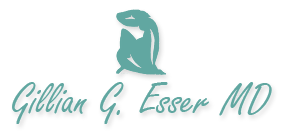Urinary incontinence refers to involuntary loss of urine. It is one of the most frequent problems that develops as women age. Childbearing and loss of estrogen affects the incidence as well as hereditary factors.
Many women suffer silently thinking that this is an inevitable part of aging. They may feel embarrassed, they may limit or even eliminate certain exercises or leisure activities from their lives. But once again we must remember my number one statement – Don’t accept the vaginal and bladder symptoms that come with age! Incontinence can be treated and often reversed.
The two most common types of urinary incontinence in women are:
- Stress incontinence. This is the most common type of incontinence. It is also the most common type of incontinence that affects younger women. Stress incontinence happens when there is stress or pressure on the bladder causing the bladder to lose urine. This can occur due to everyday activities such as coughing, sneezing, laughing or heavy lifting. Even sudden movements and physical activity can also cause you to leak urine.
- Urge incontinence. With urge incontinence, urine leakage usually happens after a strong, sudden urge to urinate, catching you off guard before you can get to a bathroom. Some women with urge incontinence are able to get to a bathroom in time but feel the urge to urinate more than eight times a day. They also do not urinate much once they get to the bathroom. Urge incontinence is sometimes called “overactive bladder.” Urge incontinence is more common in older women. It can happen when you don’t expect it, such as during sleep, after drinking water, or when you hear or touch running water.
Many women with urinary incontinence have both stress and urge incontinence. This is called “mixed” incontinence.
Do I need to see a urologist?
Not necessarily. There are many gynecological as well as non-gynecological causes for incontinence. I will work with you to understand what’s going on and recommend a treatment plan appropriate for your situation.
After evaluation and exam, options can include:
- Physical Therapy with a physical therapist who specializes in incontinence and pelvic musculature.
- Home devices that can be easily purchased online and can be used in the luxury of you home and on your own time.
- Medicines that treat urge incontinence that help relax the bladder muscle and increase the amount of urine your bladder can hold.
- Dietary changes.
- The Mona Lisa Touch procedure that has been shown to reduce incontinence by 60-70%.
- If the urge incontinence doesn’t resolve with medical therapy, dietary changes, or exercises, then a referral for Botox injections into the bladder or nerve stimulation to stimulate nerves that control the bladder will be discussed.
